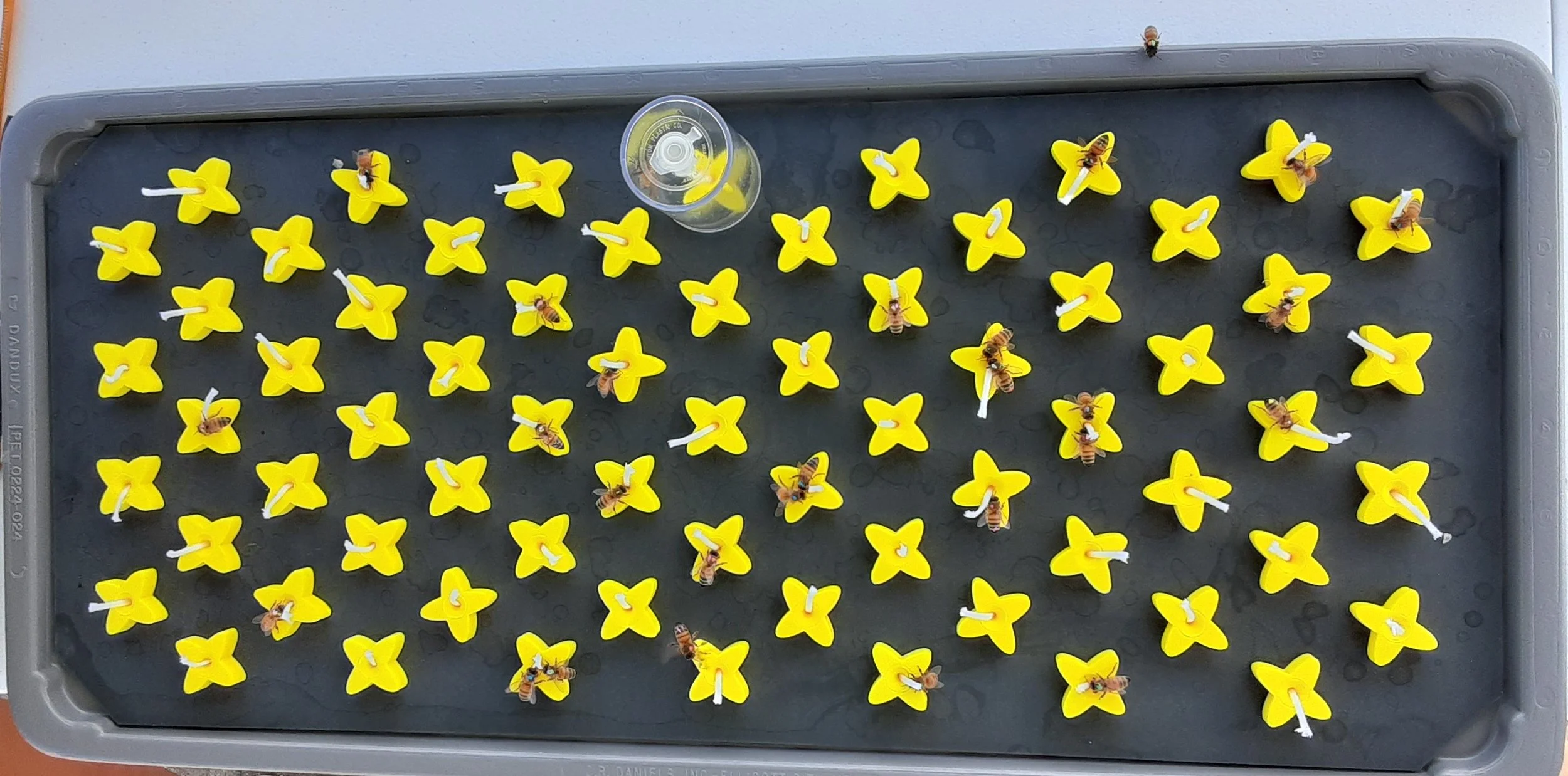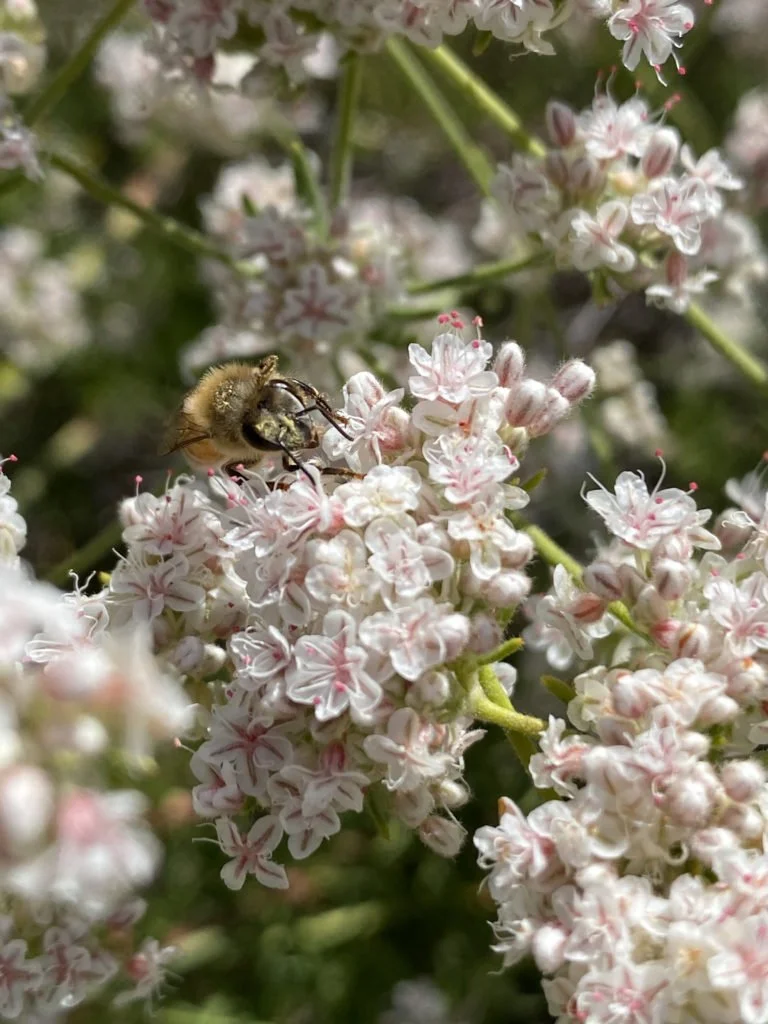
Research
Current projects
-
We know that some patches of flowers attract large numbers of honey bee visits and others attract few if any honey bees. I am interested in what drives these differences. The rewards that flowers offer, the ease of gathering those rewards, cues that flowers provide to make it easy for honey bees to find them, and the overall abundance of that species across the landscape all play important roles. We also know that flower distribution has a significant effect on the benefits of communication for honey bee colonies. However, we know much less about how flower distribution affects individual honey bees’ decisions about whether to advertise the locations of flower patches to their sisters.
Recently, we have been using experiments to test the effects of the total number of flowers per patch and flower spacing (density) on honey bee communication decisions. We have done this through a combination of field studies with real flowers and arrays of 3D-printed artificial flowers.
-
We know much more about what drives bee nectar foraging preferences than what drives their pollen foraging choices, despite the fact that pollen is bees’ main source of protein, lipids, vitamins, and minerals. This knowledge gap stems partly from the difficulty involved in identifying which plant sources bees choose to collect pollen from. To make this process easier and accessible to more research groups, we are working to train a convolutional neural network (CNN) to accurately identify pollen grains. We have started with flowering species in the area around Claremont, California and plan to scale this up and apply it to other regions.
Past work has shown that this method can work well when large numbers of training images of pollen grains are available. However, generating this training data can be extremely time-consuming and/or expensive. Therefore, we are working on ways to train a network using fewer reference images without sacrificing performance.

